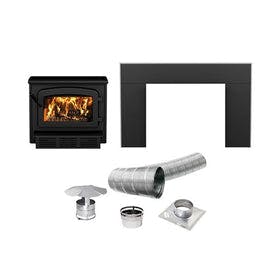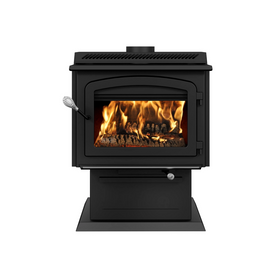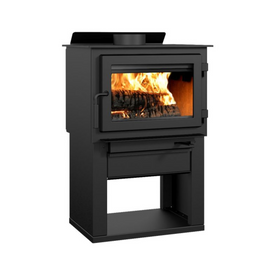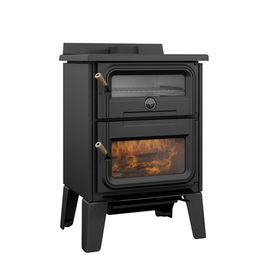
How to Make Your Living Room Healthier
Last Updated: Apr 11, 2025A family gathered around the hearth is an iconic image; playing board games in the living room is a memorable gathering. For all this quality time, the question is: is it healthy? Can we make our living room, gathering rooms, rec rooms healthier? The answer is always yes. But in assessing your living room, where do you begin? We’ll take a deeper look at fireplaces and furniture, the more typical furnishings found in living rooms.
Fireplaces and Wood Stoves
Our attraction to fire is in our genes. It spans millennia, as the fire was once life-giving and life-saving. Luckily, life is easier today, and our use of wood fire, in fireplaces and wood stoves, is gratefully for pleasure and some heating. As we rely on it less and less for heating and survival, our understanding of safely operating these appliances and maintaining them also wanes.
Table of Contents
- Furniture
- Cleaning
- Bottom Line

Remember that if your pets have a bed in the living room (or wherever), it needs more cleaning than the furniture, given the hours spent sleeping. Be sure to launder it and hang it out in the sun and replace it yearly. (I had one client who had never changed their grumpy 14-year-old cat’s bed. No wonder the cat was grumpy!)
Cleaning
Despite the use and abuse the living room can take, in my experience, it doesn’t seem to get the love and elbow grease that it deserves. It used to be that the front “good living room” that is reserved for guests and no kids was immaculate and didn’t need much cleaning—because it was not used that often. But for living rooms that we use every day, those need our attention.
Be sure to regularly wash and clean the tables in the living room with a damp soapy washcloth, just like you would with the dining room table. If you have a ceiling fan in the living room, this is an interestingly commonly overlooked cleanable item. (We learned this first-hand years ago when the kids were playing with a balloon and hit the fan and a shower of dust rained down over the whole extended family; so much for my healthy house!) The fan, when running, will re-aerosolize tiny dust particles that we will all breathe in. So, get out the microfibre cloth and a stool and give it a good solid wipe down regularly.
Vacuuming is still the single most important item to do when you have carpets. Deep cleaning a couple of times a year is also really important, such as moving furniture so you can get the dust under the big sectional up and out of the carpet. It’s work, but the air pressure when sitting on the cushions will blow that ultra-fine dust into the air. This same dust is so small that it can enter our bloodstream, so it is essential to remove it.
When using cleaning products, try to make them as healthy as possible, as many contain petroleum-based chemicals and create a false sense of cleanliness with odors and scents. Clean does not have a smell and never did—and that might be a paradigm shift for those of us who grew up connecting the scent of pine with the idea of clean. A good rule: if you are not willing to eat your cleaning products, you should reconsider what you are using.

Fresh air is the most straightforward, healthiest choice for any space. Open some windows periodically, even in winter (but not for too long). Even giving a room a few minutes to air out, especially after a binge session on Netflix, will provide air exchange that will dramatically improve the room's overall feeling and air quality without impacting the energy costs very much.
Bottom Line
We use our living rooms to unwind and relax with family and friends; memories created here can last a lifetime. By taking a few steps to ensure it is as healthy as possible, we can have a fun and healthy space to be in together.
Stephen Collette
Stephen Collette is a Building Biologist, Building Science Consultant, LEED Accredited Professional, and a Heritage Professional. Stephen is the owner of Your Healthy House and lives in Lakefield, ON with his wife and 2 daughters.











